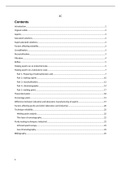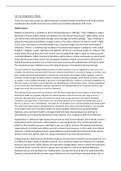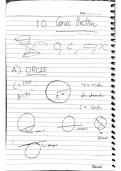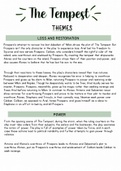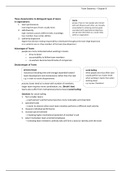Contents
Introduction...........................................................................................................................................2
Organic solids........................................................................................................................................2
Aspirin....................................................................................................................................................2
Saturated solutions................................................................................................................................2
Supersaturated solutions.......................................................................................................................2
Factors affecting solubility.....................................................................................................................2
Crystallisation........................................................................................................................................3
Recrystallisation.....................................................................................................................................3
Filtration................................................................................................................................................4
Reflux.....................................................................................................................................................5
Making aspirin on an industrial scale.....................................................................................................5
Making aspirin on a laboratory scale.....................................................................................................7
Part 1: Preparing 2-hydroxybenzoic acid...........................................................................................7
Part 2: making aspirin......................................................................................................................10
Part 3: recrystallisation....................................................................................................................12
Part 4: chromatography...................................................................................................................14
Part 5: melting point........................................................................................................................17
Theoretical yield..................................................................................................................................18
Percentage yield..................................................................................................................................19
Difference between industrial and laboratory manufacturing of aspirin.............................................19
Factors affecting purity and yield: laboratory and industrial...............................................................20
Technique reliability............................................................................................................................22
Melting point analysis......................................................................................................................22
Thin layer chromatography..............................................................................................................22
Purity testing techniques: industrial....................................................................................................23
Infrared spectroscopy......................................................................................................................23
Gas chromatography.......................................................................................................................23
Bibliography.........................................................................................................................................25
1
,Introduction
In this report I will be producing and testing the purity of a sample of aspirin. This
sample will be produced in a laboratory in a classroom setting and I will compare
this method of production to the industrial processes that pharmaceutical
companies use in order to mass produce medicine such as aspirin. Aspirin a
nonsteroidal anti-inflammatory drug that is known to relieve pain, reduce fever,
and reduce inflammation.
Organic solids
The phrase organic solids refer to materials that include carbon as one of many
different compounds. Because carbon is such a broad compound, it can be
applied to a wide range of materials. Molecular van der Waals forces hold organic
solids together. Their qualities are determined by the sort of bonding applied.
Organic substances are usually soft, have low melting temperatures, and have
poor electrical conductivity. Another benefit of weak bonding is that individual
molecular characteristics are preserved in the solid state.
Aspirin
Aspirin (C₉H₈O₄) , commonly known as acetylsalicylic acid, is a mild nonnarcotic
analgesic, or pain reliever, used to treat headaches, muscular and joint aches.
Aspirin is an NSAID that is rapidly absorbed from the stomach and small
intestine. Aspirin has long been used to treat rheumatoid arthritis, rheumatic
fever, and minor infections because it reduces fever, inflammation, and swelling.
Aspirin works on the symptoms of sickness, not the cause or duration. Aspirin
works by suppressing the formation of prostaglandins, which are biological
chemicals that are required for blood clotting and have been linked to pain
sensitisation in nerve endings.
Saturated solutions
A saturated solution is one in which the maximal concentration of a solute
dissolved in the solvent is present. In a saturated solution, the additional solute
does not dissolve. A number of factors influence how much solute can be
dissolved in a solvent to generate a saturated solution.
Supersaturated solutions
A supersaturated solution contains more solute than can be dissolved at a
specific temperature. A seed crystal can be used to start the recrystallization of
excess dissolved solute in a supersaturated solution. The seed crystal serves as
a nucleation site for the surplus dissolved crystals. A supersaturated solution
usually recrystallises quickly.
Factors affecting solubility
- Temperature: The solubility of most substances dissolved in liquid water
rises with increasing temperature. Higher temperatures increase the
kinetic energy of the solvent molecules, allowing them to more effectively
break apart the intermolecularly bound solute molecules.
- Pressure: More solute can be driven into solution by increasing pressure.
This is a method for dissolving gases into liquids. The solubility of a gas in
a liquid is proportional to its pressure above the solution's surface.
- Polarity: A polar molecule has positive and negative electric charge
concentrations. In terms of solubility, polarity is essential. A polar solvent
dissolves a polar solute, whereas a non-polar solvent dissolves a non-polar
solute. A polar solute will not dissolve when placed in a non-polar solvent.
2
, Crystallisation
A crystal is formed when atoms or molecules solidify into an organised
shape. This usually refers to the slow crystallisation of a material from a
solution. Crystals can form immediately from the gas phase or from a pure
melt. Crystallisation is also the process of mass transfer from a liquid
solution to a pure solid crystalline phase. Crystallisation requires two
events to take place. First, in a process known as nucleation, atoms, or
molecules cluster together on a small size. The number of impurities in a
system affects nucleation because impurities give surfaces for assembly.
Crystal growth may occur after the clusters have become stable and large
enough. In most cases, atoms and compounds can form several crystal
structures. During the nucleation phase of crystallisation, the
arrangement of particles is defined. In the crystal development phase of a
solution, an equilibrium is reached in which solute particles dissolve back
into the solution and solidify. When a solution becomes supersaturated,
the solvent can no longer tolerate further dissolution, causing
crystallisation. It is not always necessary to have a supersaturated
solution to produce crystallisation. To begin nucleation and growth,
individuals may need to provide a seed crystal or a rough surface.
Recrystallisation
Recrystallisation is a solvent-based method of purifying an impure chemical.
Recrystallisation is the process of dissolving a solute in a solvent at or near its
boiling point in order to form a solution. Because the solute is significantly more
soluble in the hot solvent than when it is at room temperature, a much lower
amount of hot solvent is required. The amount of dissolved solute rapidly
decreases. The solution becomes saturated at a lower concentration of solute at
the lower temperature. Purified crystals of solute emerge when the solute can no
longer be kept in solution and can be collected later. The purification method is
based on the idea that as the temperature rises, so does the solubility of most
substances. The amount of solute that can be dissolved in a solvent increase as
the temperature rises. The solubility of the contaminants in the solution, as well
as the purified substance, decreases as the temperature drops. Recrystallisation
is the process of dissolving a purified substance in a heated solvent. The solution
becomes saturated with the solute and crystallises out when the solvent cools.
Impurities are filtered out of the crystal lattice as the crystal grows, completing
the purification process. After that, gather, wash, and dry the crystals.
It is critical to choose a suitable and appropriate solvent while undertaking
recrystallisation. Whoever is conducting the experiment makes this decision. It's
critical to remember a few key characteristics while selecting a solvent. The
following are some of the requirements:
- Using a volatile solvent: By simply letting the volatile solvent to
evaporate, volatile solvents can be easily removed from the resulting
crystals.
- Using a solvent that dissolves readily or does not dissolve at all: If
the solvent dissolves impurities quickly, the impurities will not become
3

